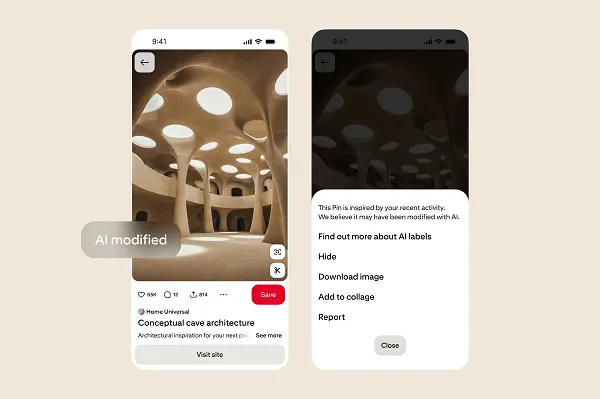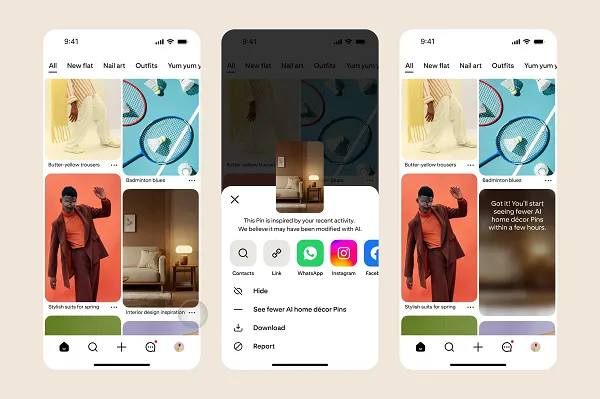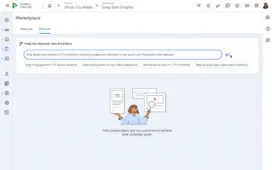After testing them out over the past few months, Pinterest has now officially launched its new AI-generated content labels, as part of an expanded effort to address the influx of AI generated content in the app.
First off, Pinterest has announced that it’s making its AI-generated content labels visible to all users, providing more transparency around AI content.

As explained by Pinterest:
“Now, when users click on an image Pin in close-up, they will see an ‘AI modified’ label in the bottom left-hand corner. To do this, we not only analyze an image’s metadata, but also develop classifiers that automatically detect Gen AI content, even if the content doesn’t have obvious markers.”
So Pinterest won’t be relying on self-reporting of AI usage, but will instead use detection tools to highlight likely AI generated or modified content, and will then include tags to indicate such.
And as I reported last month, Pinterest recently added the below note to its official documentation, which specifies how exactly it will detect AI elements in images.
“Pinterest may display a label in the foreground of an image Pin when we detect that it has been generated or modified with AI. This is in accordance with IPTC standard for photo metadata. We’re working on ways to expand our capabilities to better identify GenAI content in the future through additional technologies.”
The IPTC Photo Metadata Standard is primarily used for alt-text descriptions, but it also includes info on image editing processes and tools used in the image’s creation. As a result, Pinterest can use this to highlight AI generated content based on the data of the image.
And Pinterest is obviously confident enough in this process to make it the standard for its AI detection and labeling, though it is also adding an appeals process for any incorrect labeling:
“As we refine these classifiers, our labels will become even more helpful and accurate. However, we know that these systems aren’t perfect. This is why we set up an appeals system for creators and users who believe that their content may be mislabeled.”
Will it be perfect? No, but given reports that the app is being inundated with “AI slop,” and that spammers and scammers are using AI-generated Pins to guide users to their sites, it’s an important update, which should have an impact.
Pinterest is also adding a new way for users to get rid of AI-generated Pin results in-stream:
“We will soon launch an experiment allowing users to select a ‘see fewer’ option on Gen AI Pins for certain categories that are prone to AI modification or generation, such as beauty and art, and will continue expanding into more areas.”

So again, given concerns about AI junk taking over Pin displays, Pinterest is also seeking to help users eradicate them from view, in order to maintain trust and reliance in its systems.
Pinterest says that “See fewer” option will soon be available in the three-dot overflow menu on the bottom right of a Pin.
“This will send a signal to our systems to recommend less of this type of content.”
These are both important and valuable additions for Pinterest, which could have a big impact on the user experience. So long as Pinterest’s AI-generated tags are accurate, and are displayed prominently enough to have an impact for users.















